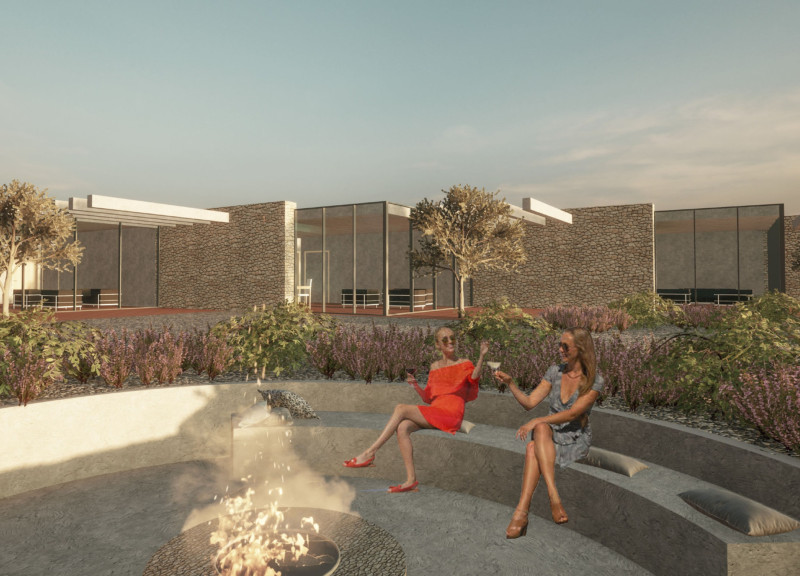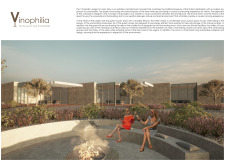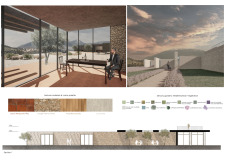5 key facts about this project
The Vinophilia project, located in Assisi, Italy, presents a design that connects modern architecture with the cultural heritage of its setting. Set against the backdrop of lush vineyards, it serves as a hospitality space featuring five guest houses arranged around a communal wine tasting room. The design focuses on sustainability while reflecting the historical significance of winemaking in the area.
Design Integration
The overall layout fosters a strong relationship between the buildings and the surrounding landscape. Guest houses are positioned to ensure views of the vineyards, creating an immersive environment for visitors. Each house has a shaded terrace that enhances outdoor living, allowing guests to enjoy the scenery while promoting relaxation and interaction with nature.
Material Choice
Terracotta is the primary material used for the floors, patios, and pathways, aligning with local building traditions. This choice reflects the project’s environmental commitments by utilizing materials that are available nearby, thereby reducing transportation costs and emissions. The design blends well with the local context and highlights the craftsmanship inherent in the region.
Sustainable Features
The project prioritizes energy efficiency in its design. Large roll-up doors and extensive glazing facilitate natural ventilation and maximize daylight. Solar panels are integrated within the design, harnessing renewable energy to minimize reliance on non-renewable resources. These features collectively enhance the project's environmental performance while ensuring comfort for its occupants.
Visitor Engagement
The central wine tasting room is a vital part of the design, encouraging social interaction and education about local viticulture. It allows guests to fully experience the winemaking heritage of Assisi as they enjoy the views of the vineyards. Incorporating elements that promote experiences of local traditions adds depth to the stay.
This thoughtful balance of indoor and outdoor spaces creates a smooth transition between the buildings and nature, evident in the welcoming gardens and seating areas that invite exploration.






















































